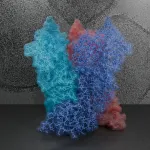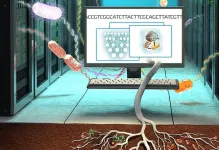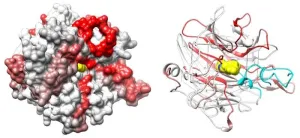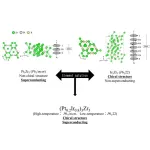(Press-News.org) With more than 100,000 drug overdose deaths in the United States in one year, communities need more than ‘just say no’ drug prevention education and abstinence-only addiction treatment to save lives, an expert has warned.
Statistics show that most people who complete conventional drug prevention education as youth eventually go on to use alcohol, nicotine, or illegal drugs.
Harm reduction expert Sheila P. Vakharia, PhD, MSW, explains: “The majority have experimented, others use socially, and some experience substance-related problems or addictions. And, regardless of their patterns of use, most have never been taught strategies for safer substance use, moderation, or how to respond in a drug-related emergency such as an overdose.”
The limits of abstinence-only treatment
While Vakharia agrees that formal addiction treatment is an important option for people, most will never walk into a treatment facility. It is estimated that 90% of people with addictions in any given year will not receive treatment, with reasons including cost and lack of nearby options.
So how does Vakharia suggest helping those left behind by both abstinence-based drug prevention education and addiction treatment?
In her new book, The Harm Reduction Gap, Vakharia proposes viewing people unserved by the current approaches to substance use as being in a gap, a ‘harm reduction gap’, where their needs for education, support, and safety surrounding drug use are unaddressed. In this gap, people are at risk of infectious disease, overdose, and other preventable substance-related harms.
Vakharia argues that harm reduction strategies can be an essential safety net for people who use substances who are unserved by the current system of care, and that expanding access will save lives and make communities safer.
She explains: “Drug-related harms and risks are manageable when people receive the knowledge, skills, and tools to do so. But as long as we continue to tell people never to use drugs and leave them with no support when they use them, we will continue to have to lose lives to preventable illness and death.”
What is harm reduction?
Vakharia explains: “Harm reduction is an approach that recognizes that drug use or other risky behaviors are a part of many people’s everyday lives. Harm reductionists understand that although abstinence may be a safe strategy, it is not feasible, appealing, or practical for all people in all situations.”
Despite evidence of their success in saving lives, harm reduction programs are still criminalized in many parts of the US and worldwide, and are not easily available and accessible to the people who need them the most.
These services include sterile syringe exchange programs, overdose prevention centers where naloxone, the opioid overdose medication is available, and safe supply programs where people with substance use disorders can access pharmaceutical alternatives to reduce the risk of fatal overdose.
Beyond these, Vakharia argues that quality drug education for youth and training in emergency responses are also needed, as is Harm Reduction Therapy as an alternative to abstinence-only treatment, and harm reduction mutual aid support groups as alternatives to Alcoholics Anonymous.
Rather than replacing abstinence-only messaging, Vakharia argues that harm reduction alternatives should be viewed as a complementary or supplementary option to those for whom abstinence is not a goal.
“While abstinence is a laudable goal, we must acknowledge that the majority of people in our society use mood-altering substances,” she explains. “Instead of leaving them on their own to figure out how to stay safe, we can promote greater public health by providing people with the tools, education, and support to understand drug-related risks and reduce them.
“At present, our current continuum of care is ill-equipped to serve the complex and diverse needs of our communities. ‘Just say no’ drug prevention and abstinence-only treatment are only suitable for a small minority, whereas integrating a harm reduction approach to substance use will broaden our impact and meet community needs more effectively.”
END
Making drug use less dangerous for users is the only way to tackle overdose epidemic
2024-02-05
ELSE PRESS RELEASES FROM THIS DATE:
Veterinary drug newly found in illicit opioid supply resistant to naloxone
2024-02-05
An article published in CMAJ (Canadian Medical Association Journal) describes five things clinicians and harm reduction workers should know about xylazine, a veterinary medication adulterating the illicit opioid supplyhttps://www.cmaj.ca/lookup/doi/10.1503/cmaj.231603.
There is no antidote to the effects of xylazine, and the authors explain that xylazine contamination should be suspected when naloxone appears not to work effectively in people with opioid toxicity.
Highlights:
Xylazine is not approved for use in humans and is increasingly found in illicit drug samples along with fentanyl. People using ...
Difficulty swallowing, allergies in children and young adults: is it eosinophilic esophagitis?
2024-02-05
Children and young adults with allergies or eczema who have difficulty swallowing may have eosinophilic esophagitis. A review published in CMAJ (Canadian Medical Association Journal) provides guidance on how to diagnose and manage this chronic inflammatory disease https://www.cmaj.ca/lookup/doi/10.1503/cmaj.230378.
In people with eosinophilic esophagitis, the esophageal lining is inflamed, which can cause injury and narrowing of the throat. Although it can affect anyone, the risk is higher in children aged 5–14 years ...
Down to the core of poxviruses
2024-02-05
A recent re-emergence and outbreak of Mpox brought poxviruses back as a public health threat, underlining an important knowledge gap at their core. Now, a team of researchers from the Institute of Science and Technology Austria (ISTA) lifted the mysteries of poxviral core architecture by combining various cryo-electron microscopy techniques with molecular modeling. The findings, published in Nature Structural & Molecular Biology, could facilitate future research on therapeutics targeting the poxvirus core.
Variola virus, the most notorious poxvirus and one of the deadliest viruses to have ...
New weight loss medication may help lower blood pressure in adults with obesity
2024-02-05
Research Highlights:
The weight loss medication tirzepatide significantly lowered the systolic blood pressure of nearly 500 adults who had obesity and took the medication for 36 weeks, or about eight months, in a subset of an international clinical trial.
Participants taking 5 mg of tirzepatide had an average systolic blood pressure reduction of 7.4 mm Hg; participants taking 10 mg had an average systolic blood pressure reduction of 10.6 mm Hg; and participants taking 15 mg had an average systolic blood pressure reduction of 8.0 mm Hg.
In this study, the blood-pressure lowering effects of tirzepatide were evident during both day and night ...
Study finds new treatment to reverse inflammation and arterial blockages in rheumatoid arthritis
2024-02-05
UNDER STRICT EMBARGO UNTIL 10AM (UK TIME) ON MONDAY 5 FEBRUARY 2024
Researchers from Queen Mary University of London have found that the molecule RvT4 enhances the body’s natural defences against atherosclerosis (hardening of the arteries) in patients with rheumatoid arthritis.
Studies in mice undertaken by researchers from Queen Mary University of London’s William Harvey Research Institute and Centre for Inflammation and Therapeutic Innovation, and funded by the European Research Council (ERC) and Barts Charity, shows that increasing levels of the RvT4 molecule in the body improves the ability of the body’s own defence ...
Improving climate predictions by unlocking the secrets of soil microbes
2024-02-05
Climate models are essential to predicting and addressing climate change, but can fail to adequately represent soil microbes, a critical player in ecosystem soil carbon sequestration that affects the global carbon cycle. A team of scientists led by the Department of Energy’s Lawrence Berkeley National Laboratory (Berkeley Lab) has developed a new model that incorporates genetic information from microbes. This new model enables the scientists to better understand how certain soil microbes efficiently store carbon supplied by plant ...
City of Hope preclinical study uncovers two proteins’ crucial role in causing cancer cell growth
2024-02-05
FINDINGS
Scientists at City of Hope®, one of the largest cancer research and treatment organizations in the United States, have discovered a new cellular mechanism that plays an important role in cancer cells’ ability to cause disease. The study was published in Nature Structural & Molecular Biology today.
A team led by Chun-Wei (David) Chen, Ph.D., an associate professor of systems biology at City of Hope, pinpointed two cell-surface proteins, integrin αV and β5, that partner to spur cancer cell growth. The researchers next identified a region of integrin αV called the β-propeller domain ...
Immune response, not acute viral infections, responsible for neurological damage, McMaster researchers discover
2024-02-05
For years, there has been a long-held belief that acute viral infections like Zika or COVID-19 are directly responsible for neurological damage, but researchers from McMaster University have now discovered that it’s the immune system’s response that is behind it.
The research, published on Feb. 5, 2024 in Nature Communications, was led by Elizabeth Balint, a PhD student at McMaster, and Ali Ashkar, a professor with the Department of Medicine and the Canada Research Chair in Natural Immunity and NK Cell Function.
“We were interested in trying to ...
Scientists mix and match properties to make new superconductor with chiral structure
2024-02-03
Tokyo, Japan – Researchers from Tokyo Metropolitan University have created a new superconductor with a chiral crystalline structure by mixing two materials, one with superconductivity but no chirality, another with chirality but no superconductivity. The new platinum-iridium-zirconium compound transitions to a bulk superconductor below 2.2 K and was observed to have chiral crystalline structure using X-ray diffraction. Their new solid solution approach promises to accelerate the discovery and understanding of ...
Cary Institute receives NSF funding to offer ecological research experiences for teachers
2024-02-03
(Millbrook, NY) Cary Institute for Ecosystem Studies is launching a new program to support high school and middle school educators in teaching global change and ecology. Starting in the summer of 2024, nine teachers will spend six weeks at Cary Institute conducting collaborative research in ecosystem science. Follow-up meetings throughout the school year will support the teachers as they develop and implement innovative curricula based on their research experiences.
The program is funded by a three-year award from the National Science Foundation as part of its Research ...




